Smartphones & Tablets | June 28, 2023
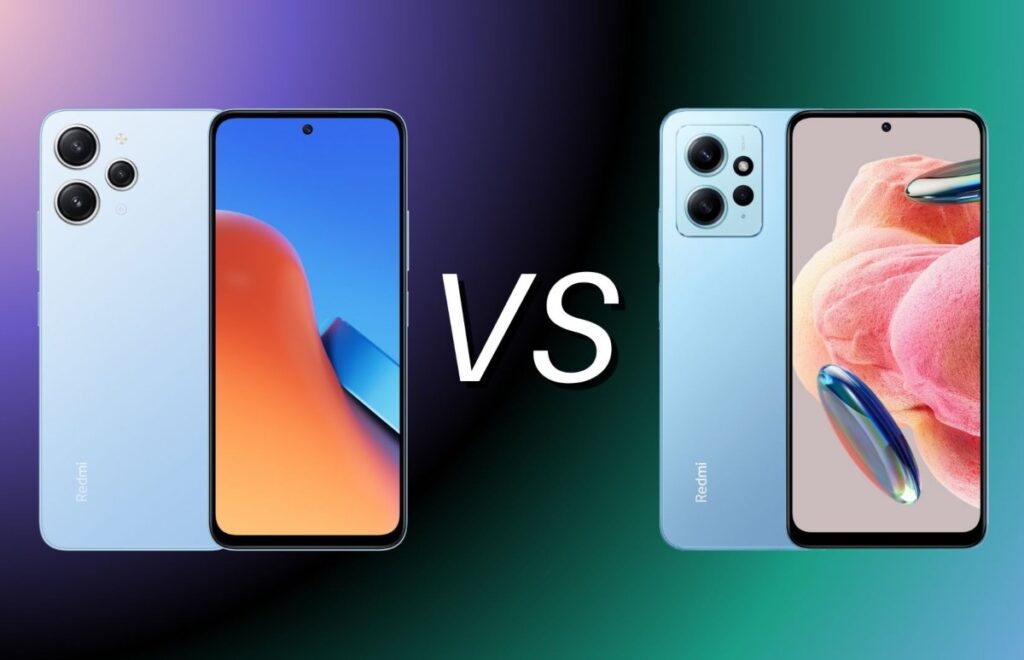
| Xiaomi Redmi 12 | Xiaomi Redmi Note 12 | |
| Screen | 6.79 inches of IPS LCD technology, 20.4: 9 aspect ratio, FullHD+ resolution of 2,460 x 1,080 pixels, 90 Hz refresh rate (adaptive), 240 Hz touch sampling rate, maximum brightness of 550 nits and unspecified resistant glass | 6.67 inches of AMOLED technology, 20: 9 format, FullHD + resolution of 2,400 x 1,080 pixels, 120 Hz refresh rate, 240 Hz touch sampling rate, maximum brightness of 1,200 nits and Corning Gorilla Glass 3 glass |
| Main chamber | – 50-megapixel main sensor with f/1.8 focal aperture with FullHD 1080p video recording capability at 30 frames per second. – Secondary sensor with 8-megapixel wide-angle lens with f/2.2 focal aperture and 120° field of view. – Sensor tertiary with 2-megapixel macro lens with f/2.4 focal aperture. | – 50-megapixel main sensor with f/1.8 focal aperture with FullHD 1080p video recording capability at 30 frames per second. – Secondary sensor with 8-megapixel wide-angle lens with f/2.2 focal aperture and 118° field of view. – Sensor tertiary with 2-megapixel macro lens with f/2.4 focal aperture. |
| Selfie camera | 8-megapixel main sensor with f/2.1 focal aperture with video recording capability in FullHD 1080p resolution at 30 frames per second | 13-megapixel main sensor with f/2.2 focal aperture with video recording capability in FullHD 1080p resolution at 30 frames per second |
| Internal memory | 128 or 256 GB eMMC 5.1 | 64 or 128 GB UFS 2.2 |
| Extension | Available via microSD card | Available via microSD card |
| Processor and RAM | – Mediatek Helio G88 of 12 nanometers and eight cores at 2.0 GHz max. – 4 or 8 GB of LPDDR4 type RAM | – Qualcomm Snapdragon 685 6 nanometer eight-core 2.8 GHz max. – 4, 6 or 8 GB of LPDDR4 type RAM |
| Battery | 5,000 mAh with support for 18W fast wired charging (charger included in the box) | 5,000 mAh with support for 33W fast wired charging (charger included in the box) |
| OS | Android 13 under MIUI 14 | Android 13 under MIUI 14 |
| Connections | 4G LTE, Wi-Fi 802.11 a/b/g/n/ac dual-band, Bluetooth 5.3, GPS with A-GPS and GLONASS, NFC for contactless payments, FM radio, USB Type-C input and jack 3.5 mm headphone jack | 4G LTE, Wi-Fi 802.11 a/b/g/n/ac dual-band, Bluetooth 5.0, GPS with A-GPS and GLONASS, NFC for contactless payments, USB Type-C input and 3.5-mm jack for headphones |
| SIM | Dual nano SIM | Dual nano SIM |
| Design | Colors: Black, Light Blue and Silver | Colors: Onyx Grey, Mint Green, Ice Blue |
| Dimensions and weight | 168.6 x 76.3 x 8.2 millimeters and 198.5 grams | 165.7 x 76 x 7.9 millimeters and 184 grams |
| Featured Features | Side-mounted fingerprint sensor, facial recognition, infrared sensor for control of external devices, and IP53 water and dust resistance (splash proof) | Side-mounted fingerprint sensor, facial recognition, stereo speakers, infrared sensor for control of external devices, and IP53 water and dust resistance (splash proof) |
| Release date | Available | Available |
| Price | from 200 euros | from 150 euros |
The Xiaomi Redmi 12 was recently launched and promises to be one of the most interesting budget smartphones of 2023. We have already compared it to the Redmi 12C, and it has performed quite well. Now let’s see how it fares against the Redmi Note 12 (4G version), which is one of the best value-for-money options at the moment, without a doubt. To determine which of the two is better and why, let’s take a look at all their differences, features, and prices in this comparison of the Xiaomi Redmi 12 vs Redmi Note 12. Which one do you think will win? Find out…
Please note that the prices mentioned in the article may vary over time. we focus on analyzing the differences as of the publication date.
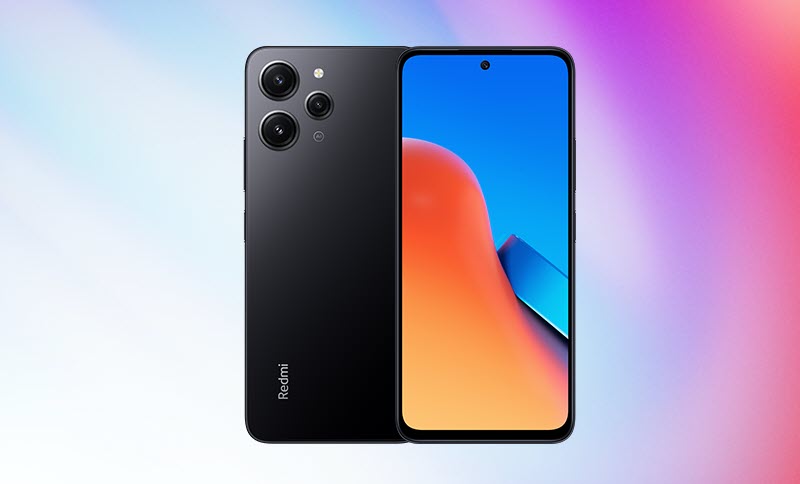
As we mentioned in the previous comparison of the Redmi 12C, the new Xiaomi Redmi 12 is very similar to the Redmi Note 12, and that’s because they share the same design. Of course, both phones have their obvious differences, but they are subtle and can be found in their camera modules.
Both phones feature three rear cameras. However, the ones on the Redmi Note 12 are enclosed in a rectangular module, while the ones on the Redmi 12 protrude individually from its back. Additionally, the smaller camera on both phones is positioned differently, as well as the LED flash, which on the Redmi Note 12 may give the impression of being a fourth camera. Other than that, both phones have straight edges and come with a hole-punch display for the front camera.
In terms of construction and materials, the Xiaomi Redmi 12 has a glass back, while the Redmi Note 12 is made entirely of plastic. However, in terms of dimensions and weight, the Redmi Note 12 is more compact, thinner, and lighter, weighing about 15 grams less than the Redmi 12.
But the differences between the Xiaomi Redmi 12 and Redmi Note 12 don’t end there. In the display department, there are more differences…
To start, the display of the Xiaomi Redmi 12 is larger than that of the Redmi Note 12, with a diagonal size of 6.71 inches compared to 6.67 inches. Furthermore, the Redmi 12 features an IPS LCD display, while the Redmi Note 12 boasts an AMOLED display, which means it produces more vibrant colors, making it better for multimedia consumption (movies, series, videos, images, games, etc.).
The display of the Xiaomi Redmi Note 12 is also much brighter. It reaches a maximum brightness of 1,200 nits, compared to the Redmi 12’s panel, which only reaches 550 nits. The refresh rate is also higher on the Redmi Note 12, at 120 Hz, while the Redmi 12 has a refresh rate of 90 Hz. However, the advantage of the Redmi 12 is that it can vary between 36, 48, and 60 Hz depending on the current usage.
Both displays have Full HD+ resolution, but the Redmi 12 has a resolution of 2,460 x 1,080 pixels, while the Redmi Note 12 has a resolution of 2,400 x 1,080 pixels. This results in a slimmer aspect ratio of 20.4:9 for the former and 20:9 for the latter. The touch sampling rate is the same for both at 240 Hz. As for protection, both displays are coated with resistant glass, but the manufacturer has only specified that the Xiaomi Redmi Note 12’s display features Corning Gorilla Glass 3.
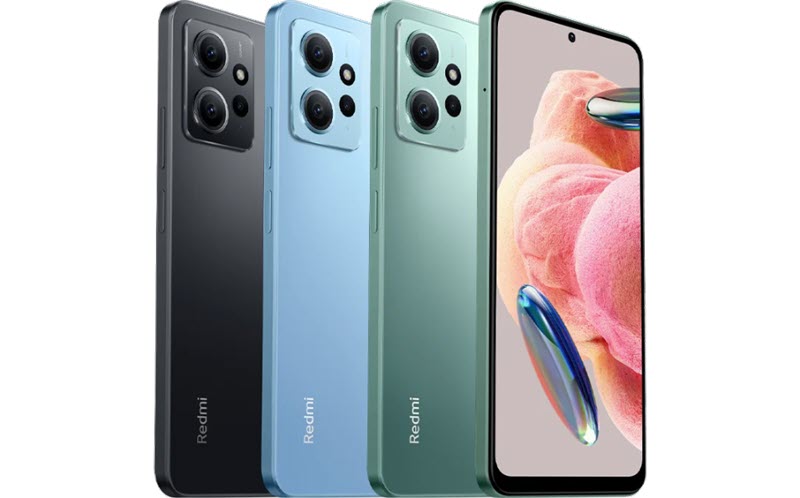
The Xiaomi Redmi 12 and Redmi Note 12 have similar performance, but the Redmi Note 12 has a slight edge, making it better at running resource-intensive applications and games with demanding graphics. This is thanks to the Qualcomm Snapdragon 685 chipset inside the Redmi Note 12, which is slightly more powerful than the Helio G88 chipset in the Redmi 12.
The Snapdragon 685 is a processor built on a 6-nanometer process, which means it is more energy-efficient than the Redmi 12’s Helio G85, which is built on a 12-nanometer architecture. Additionally, the Snapdragon 685 features eight cores clocked at a maximum frequency of 2.8 GHz, whereas the Helio G88 in the Redmi 12 runs at 2.0 GHz with its eight cores.
But the Xiaomi Redmi Note 12 4G is not only faster than the Redmi 12 in terms of its processor, but also in terms of its internal memory. It comes with 64GB or 128GB of UFS 2.2 storage, while the Redmi 12 offers 32GB, 64GB, or 128GB of eMMC 5.1 storage, which has lower read and write speeds. However, both phones support expandable storage via a microSD card of up to 1TB.
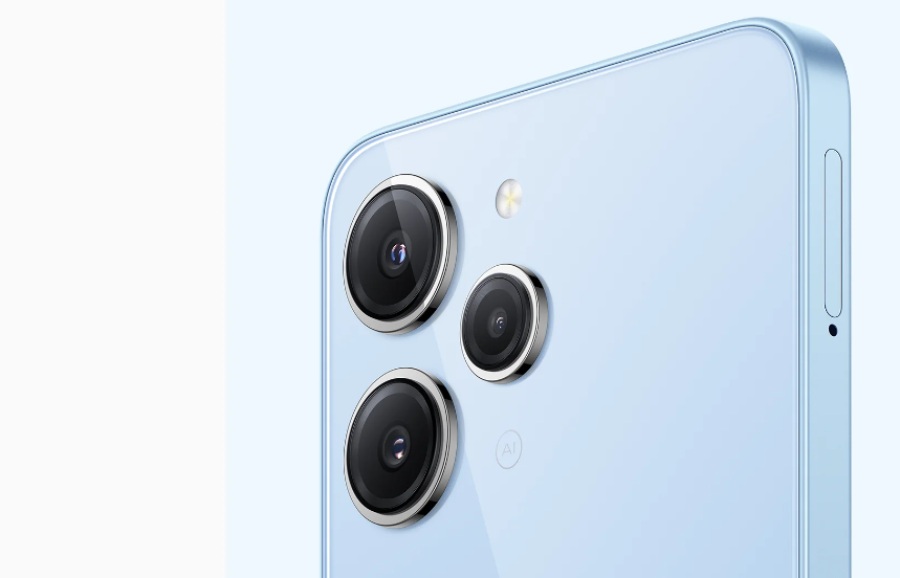
In terms of cameras, there aren’t many differences between the Xiaomi Redmi Note 12 and Redmi 12. In fact, they both feature the same rear camera setup, consisting of three cameras. The primary camera is a 50-megapixel sensor with an aperture of f/1.8, while the second and third cameras are an 8-megapixel ultra-wide-angle lens with an aperture of f/2.2 and a 2-megapixel macro lens with an aperture of f/2.4, respectively.
However, the front camera differs between the two devices. The Xiaomi Redmi Note 12 has a higher-resolution front camera, with 13 megapixels and an aperture of f/2.2. On the other hand, the Redmi 12 features an 8-megapixel front camera with an aperture of f/2.1.
For video, both the Xiaomi Redmi Note 12 and the Redmi 12 can record in Full HD 1080p at 30 frames per second with the main and front cameras.
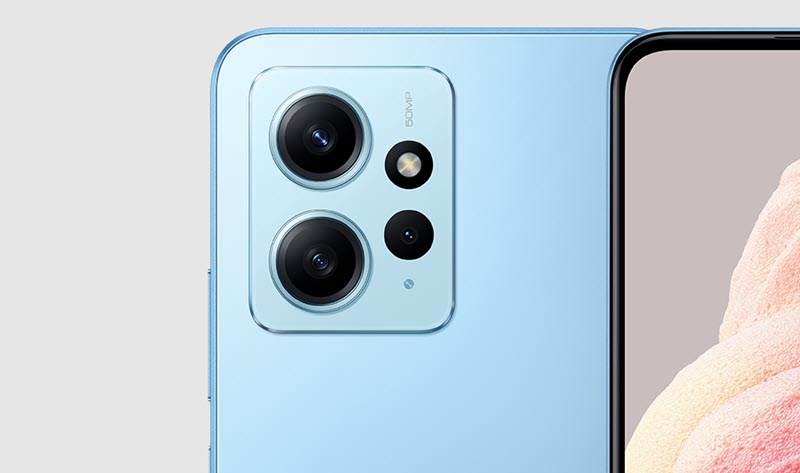
We continue with the comparison of the Xiaomi Redmi Note 12 and Redmi 12. Now let’s move on to their batteries, which are both 5,000 mAh, providing almost the same battery life. However, they differ in terms of fast charging speeds. The Redmi Note 12 supports 33W fast charging, while the Redmi 12 supports 18W fast charging. This means that the Redmi Note 12 can achieve a full charge in about an hour and a little more, while the Redmi 12 takes approximately an hour and forty minutes. Fortunately, both phones include their original charger in the box and have a USB Type-C port.
In terms of connectivity, both devices share most of the options, including 4G LTE, dual-band Wi-Fi 5, GPS with A-GPS, NFC for contactless mobile payments, support for dual nano SIM cards, and a 3.5mm headphone jack. They also include an infrared sensor that allows them to act as a remote control, but only the Xiaomi Redmi 12 has an FM radio. Both devices have Bluetooth, but the Redmi 12 has a more advanced version, which is v5.3, while the Redmi Note 12 has v5.0.
Other features include a side-mounted fingerprint sensor, facial recognition for unlocking, and IP53 water resistance (splash-proof). However, only the Xiaomi Redmi Note 12 has dual stereo speakers. Both phones come with Android 13 under MIUI 14.
We have now highlighted all the differences between the Xiaomi Redmi Note 12 and Redmi 12, so all that’s left is to look at their prices and determine which one is better and why.
The Xiaomi Redmi Note 12 4G is currently available for around 140 euros on websites like Amazon, despite being initially launched with an official price of around 230 euros. On the other hand, the Redmi 12 has just been announced with an official starting price of around 200 euros, but it is expected to be available in the market in the coming weeks at a much lower price, similar to that of the Redmi Note 12. Meanwhile, the Redmi Note 12 is much cheaper, making it a more attractive option for those looking to save on expenses.
Not only is it cheaper, but the Redmi Note 12 is also the winner of this Xiaomi Redmi 12 vs Redmi Note 12 comparison. This is because it offers a better value for money compared to the Redmi 12. Nevertheless, as we have seen throughout this comparison, each phone has its advantages, and now we see it…
The Redmi 12 has a more attractive design, featuring a glass back. Additionally, it includes an FM radio, a more advanced version of Bluetooth, and a larger screen with adaptive refresh rate, features that the Redmi Note 12 lacks. However, in the latter, we have more advanced features in the remaining aspects.
Specifically, while its screen is slightly smaller than that of the Redmi 12, it is an AMOLED display with a higher refresh rate. Moreover, it is much brighter, making it easier to view in very sunny conditions. It also has a more powerful processor and a faster read and write speed for internal memory, making it better at running apps and games as it operates more quickly and smoothly.
Its rear camera setup is the same as that of the Redmi 12, but it has a higher-resolution front camera, allowing for higher-quality selfies. At the same time, it has a battery that supports more powerful fast charging. It is also worth mentioning that it is more compact and lightweight, and it has dual stereo speakers that contribute to an immersive sound experience.